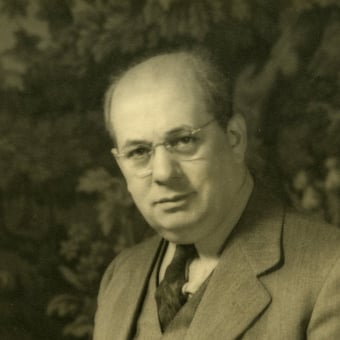
Ignatz Waghalter
The composer Ignatz Waghalter was born into a highly musical Jewish family and grew up in Warsaw * went to Berlin at the age of 17 where he met Joseph Joachim, who helped him gain admittance to the Akademie der Künste in Berlin * there he studied composition and conducting under Friedrich Gernsheim * received the prestigious Mendelssohn-Price for his Sonata for violin and piano op.5 at the age of 21 * publication of chamber music compositions, e.g. Concerto for Violin and Orchestra op.15 and Rhapsodie op. 9 * made himself a name as conductor, first at the Metropol-Theater (now Komische Oper) in Berlin, then as principle conductor at the new Deutsches Opernhaus * in this position he contributed greatly to the success of Giacomo Puccini’s operas on German stages * began to compose own operas in 1914, e.g. Mandragola und Jugend, which were very successful in Germany * after Hitler’s seizure of power Waghalter fled first to Czechoslovakia then to Austria, where he composed his opera Ahasaverus und Esther, which is a musical response to fascism and anti-Semitism * immigrated to the U.S. shortly after the Anschluss in 1938, where he struggled to continue his career as the successful conductor he had been in Berlin in the 1910s and 20s * as a composer with Polish roots he combined the traditions of Brahms and Schumann with those of Chopin * is considered as a composer of intense melodicism; occasionally an influence of Jewish folksongs can be detected
Works by Ignatz Waghalter include:
String Quartet in D major op.3 (1901)
Violin Concerto in A major op. 15 (1911)
Geständnis und Idyll op.19 (1921) for violin and piano
"One of the most unjustly forgotten musicians of pre-1933 Europe. How was it possible that this music went missing for a century?" — Michael Haas
Also visit the website www.waghalter.com
